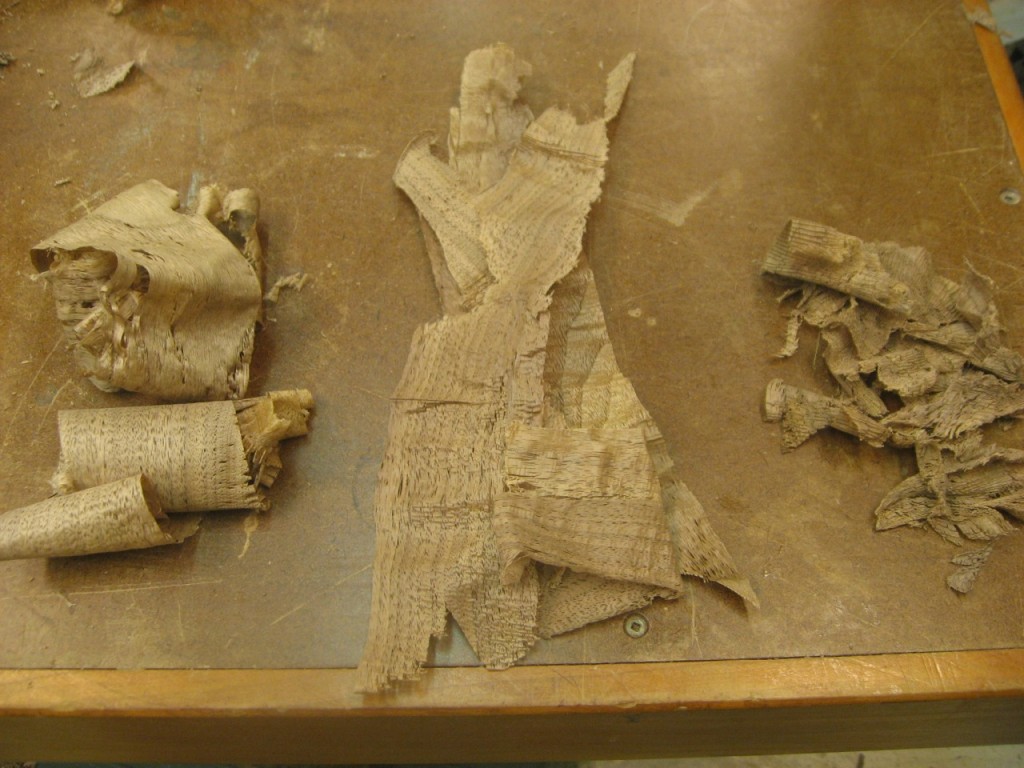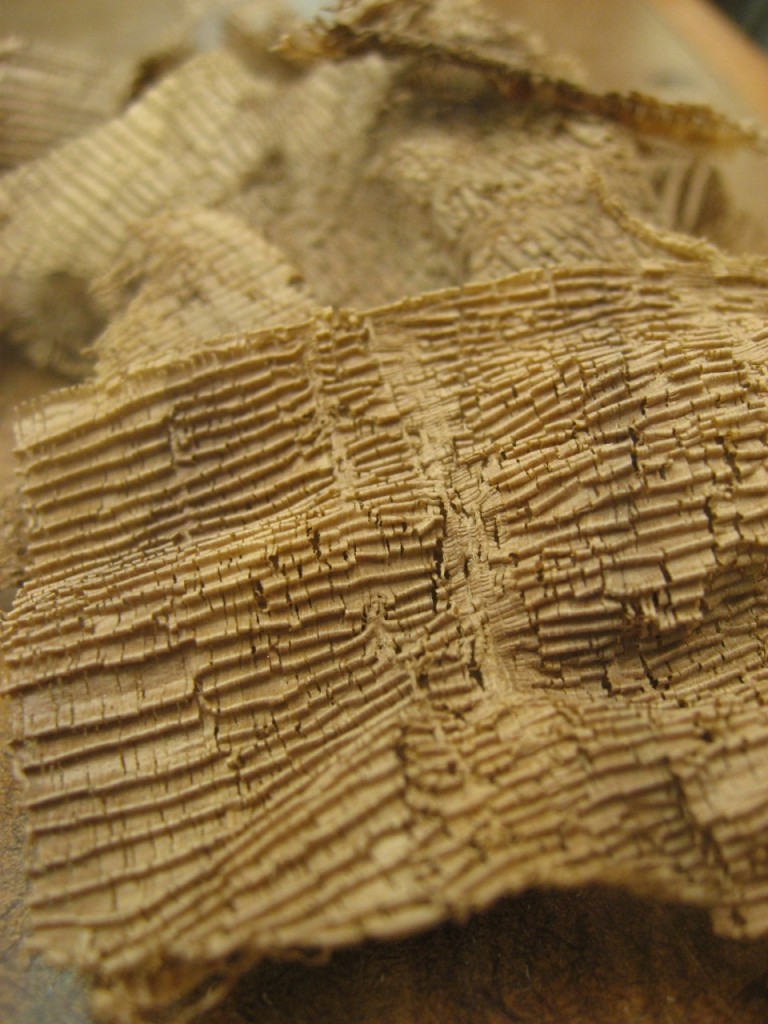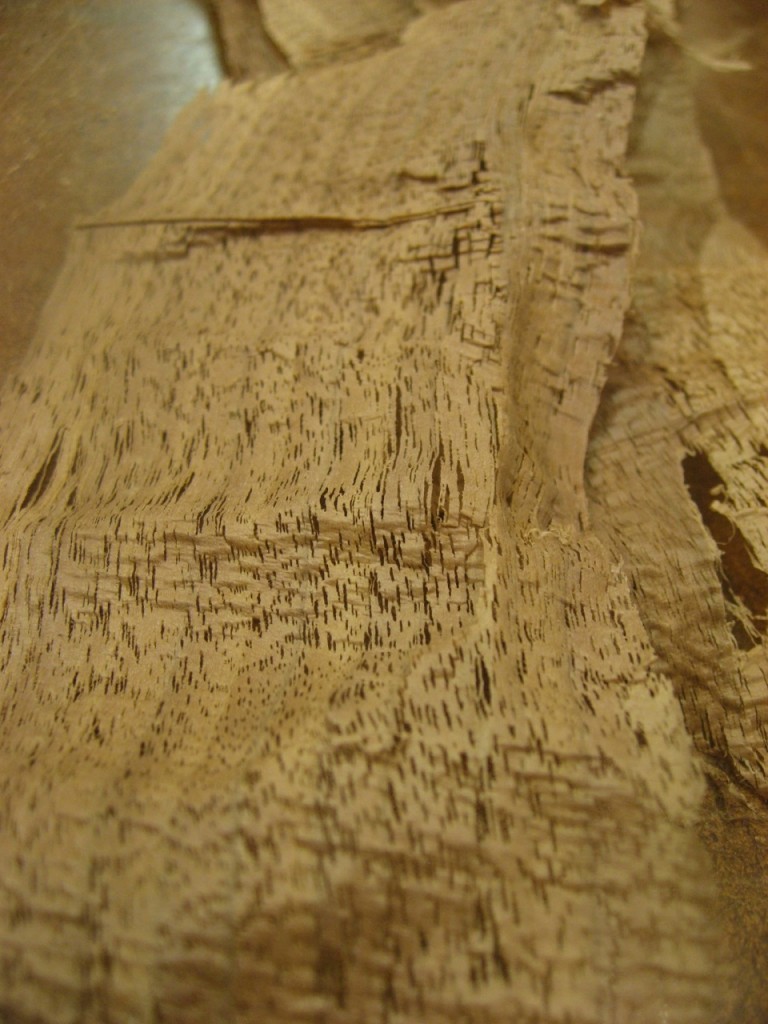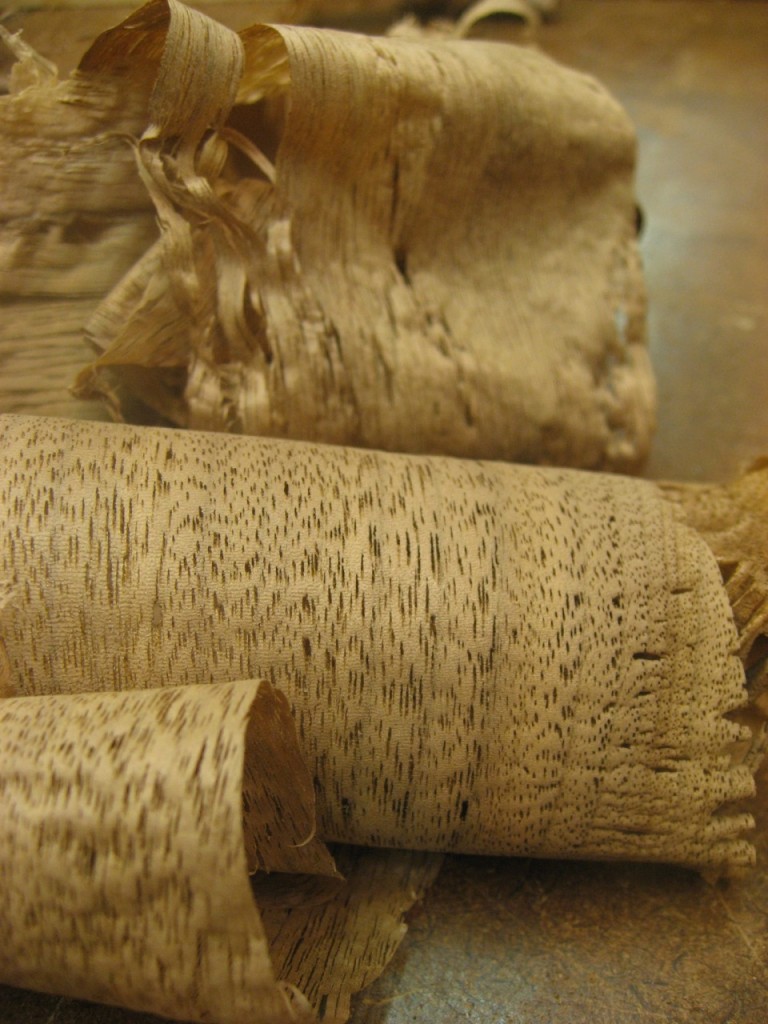There’s been some buzz around the internet of a video showing the effect of moving a hand-plane’s chipbreaker all the way to the front (within thousands of an inch of the iron’s tip). Even Chris Schwarz had a post on it. Pretty interesting stuff, and I decided to try it out myself.
I won’t go into details that you can read in the above posts – because my results were very similar. I tried three different settings which resulted in three different shavings, although the wood surface left behind was pretty similar in all cases.
I first set my standard chipbreaker to within a couple thousands of the front of the iron. This made the plane hard to push and left behind very crinkled shavings. However, the surface left behind looked nice.
I then honed a 50 degree microbevel on my chipbreaker. This made the plane a little easier to push and the shavings had minimal crinkle.
Finally I went back to my standard setup with the chipbreaker about 1/32″ of an inch from the iron’s tip. This made the hand-plane a lot easier to push and spit out the usual smooth shavings. Since I was planing fairly tame wood, the same surface was left behind.
So, the upshot to me is that this technique gives exactly the same results as approaching the wood with a higher angle-of-attack than the typical 45 degrees (via a high-angle frog, back-bevel blade, bevel-up, whatever). It makes the hand-plane harder to push, but tears-out grain much less – leaving a great surface especially on hard-to-plane woods. Give it a shot, it’s pretty fun and easy to try.





